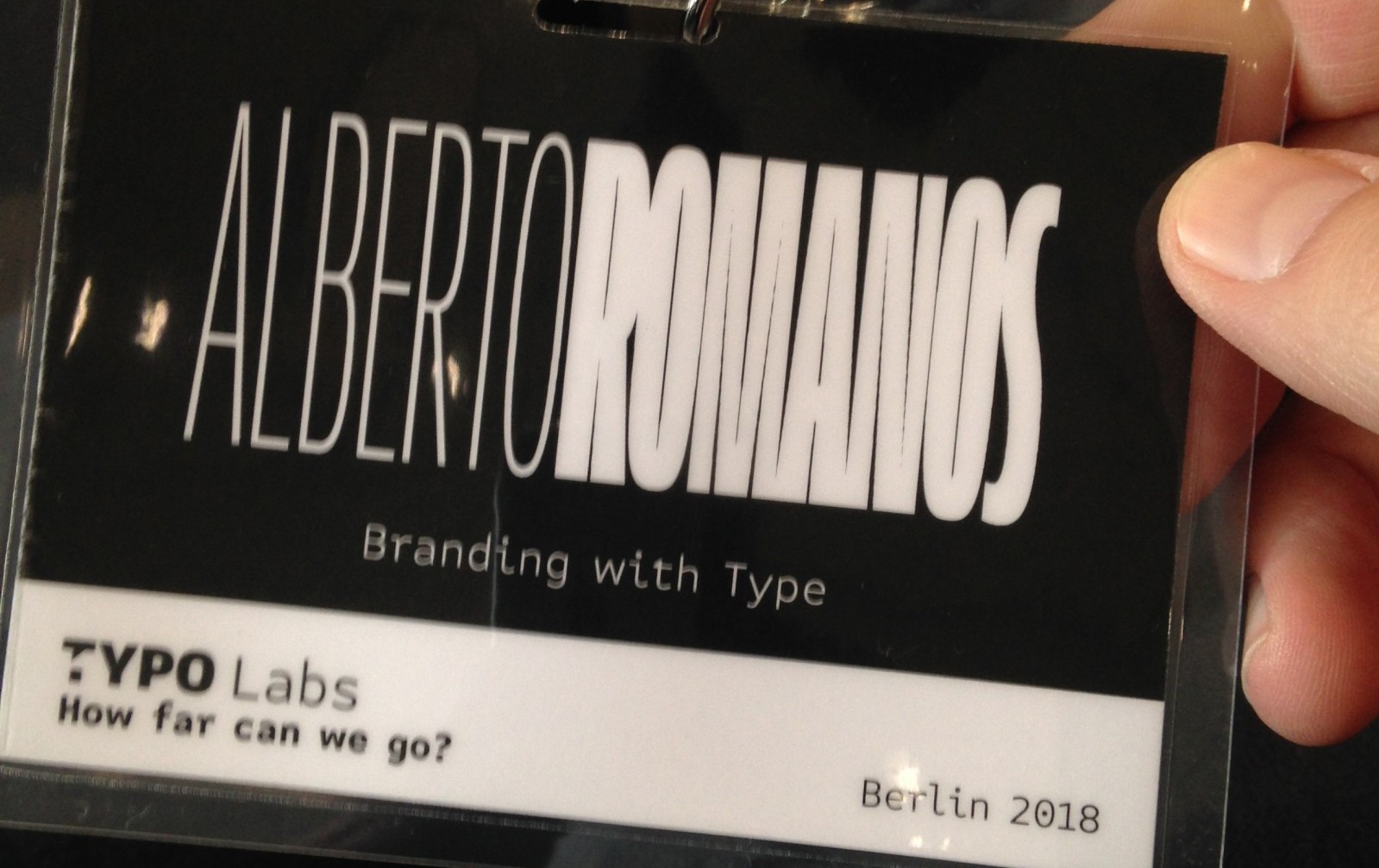TypoLabs is not the usual collection of portfolio-show-and-tells like in a lot of other design events; there are talks about developments in type production technology, thought provoking sessions about the future of our profession, workshops on the software we use to create fonts,… very geeky stuff that brought together a crowd formed by 95% typeface designers and font engineers into a converted church in East Berlin that became the place of worship for the Bezier goddess.
We couldn’t miss it, so last Wednesday we got on a plane to Berlin for 3 days packed with insights. Here’s our very personal take on what stood out:
Gerry Leonidas, Director of the prestigious MA Typeface Design at Reading University and current president of ATypI, gave a concise but thought provoking talk about how we design fonts and the importance of listening to our users, the designers (in the broadest sense of the term: web, print, app or whatever). His was the very first talk of TYPO Labs and there couldn’t have been a better way to kick off.
The day quickly proved that there could be a place for Variable Fonts beyond the hype and the whacky animations, be it for purely technical reasons like lighter webfont files (specially on complex scripts like CJK), be it for better typography on the Arabic kashidas as Sahar Afshar and José Miguel Solé Bruning demonstrated, or type subtly responding to light conditions on screen, and that’s just scratching the surface. All we type designers need now is the demand for it.
Ulrike Rausch built a very strong case for layout software companies to rise their game regarding OpenType features. It’s been 20-odd years since the advent of OpenType technology and there are still issues on Adobe or Microsoft software, shocking considering that they came up with the format.
Sol Matas and Andrés Torresi from Argentina/Berlin based Huerta Tipográfica gave a great workshop on their new plugin for Glyphs (the software we use to edit fonts at Branding with Type) called HT LetterSpacer. A powerful tool for managing the spacing of a font that we’re looking forward to integrating in our workflow.
But the climax reached towards the end, with Saturday’s second-to-last speaker: Dutch foundry Underware captivated the full room with their “Font Fiction” talk, leaving me wondering how many of their fictional predictions for the future of fonts will actually become real (and how soon).
Now we’re back to “normal”, missing Berlin and the fantastic atmosphere that got us going well into the early hours, beer in hand, switching between non-linear interpolations and global political affairs. Looking forward to the next one.
